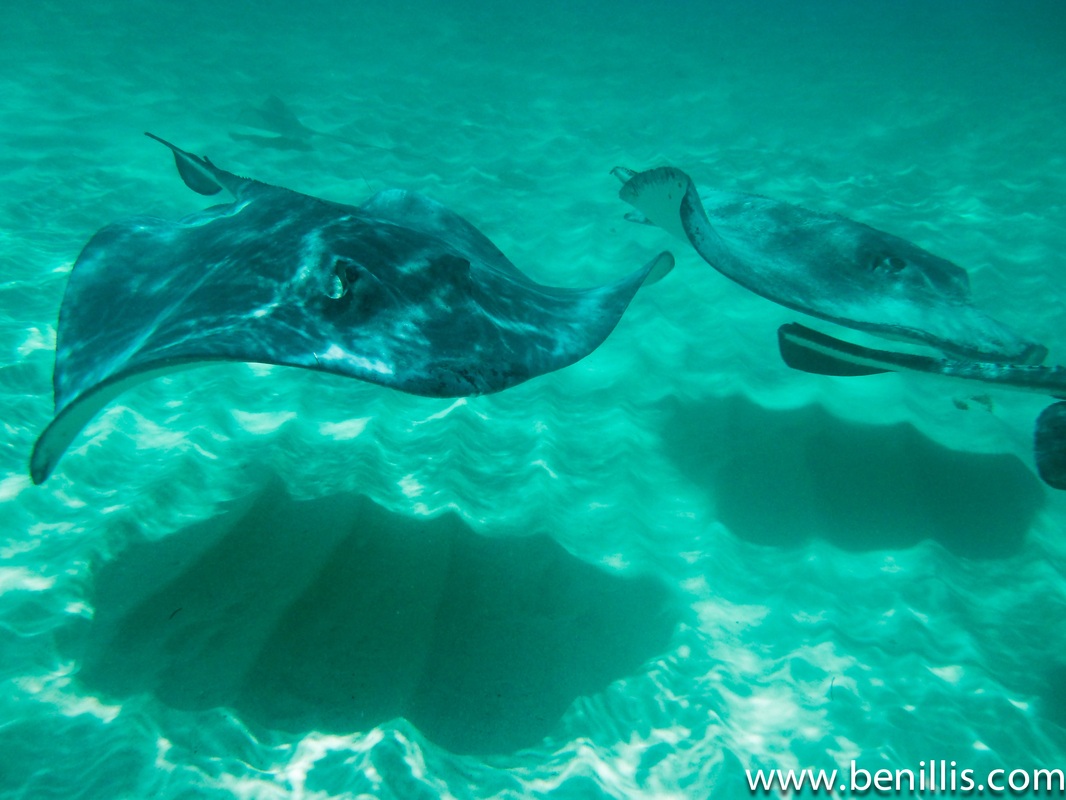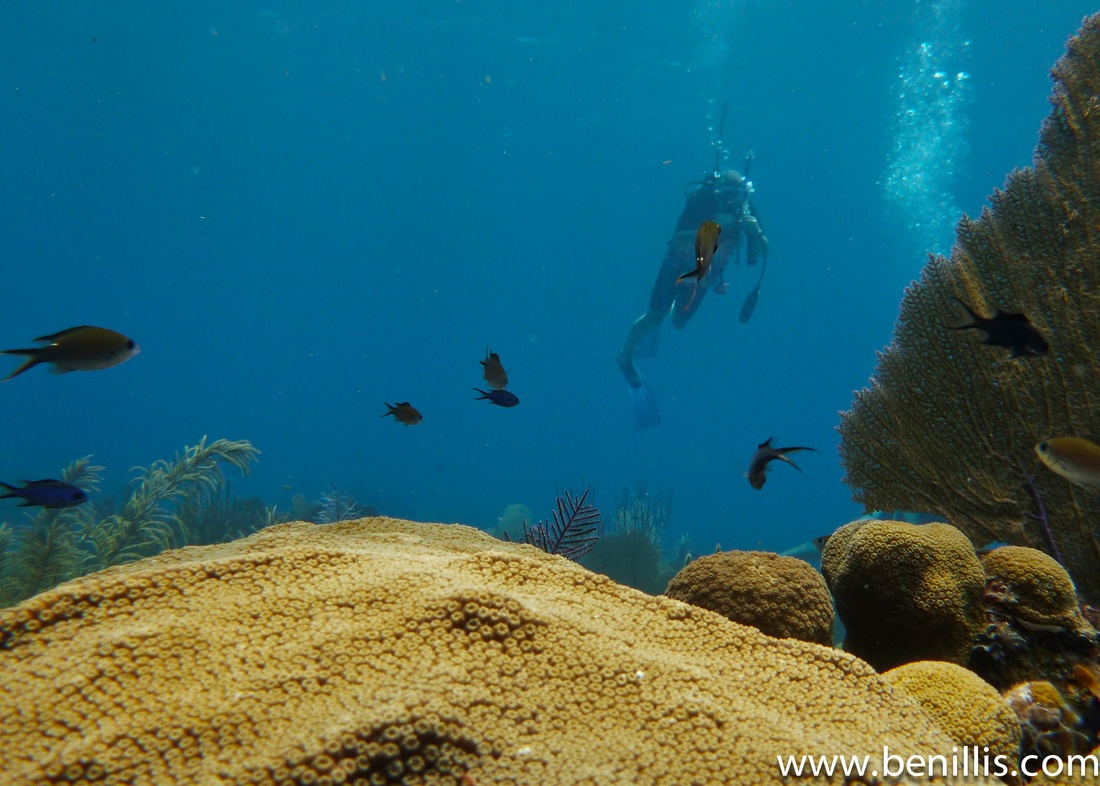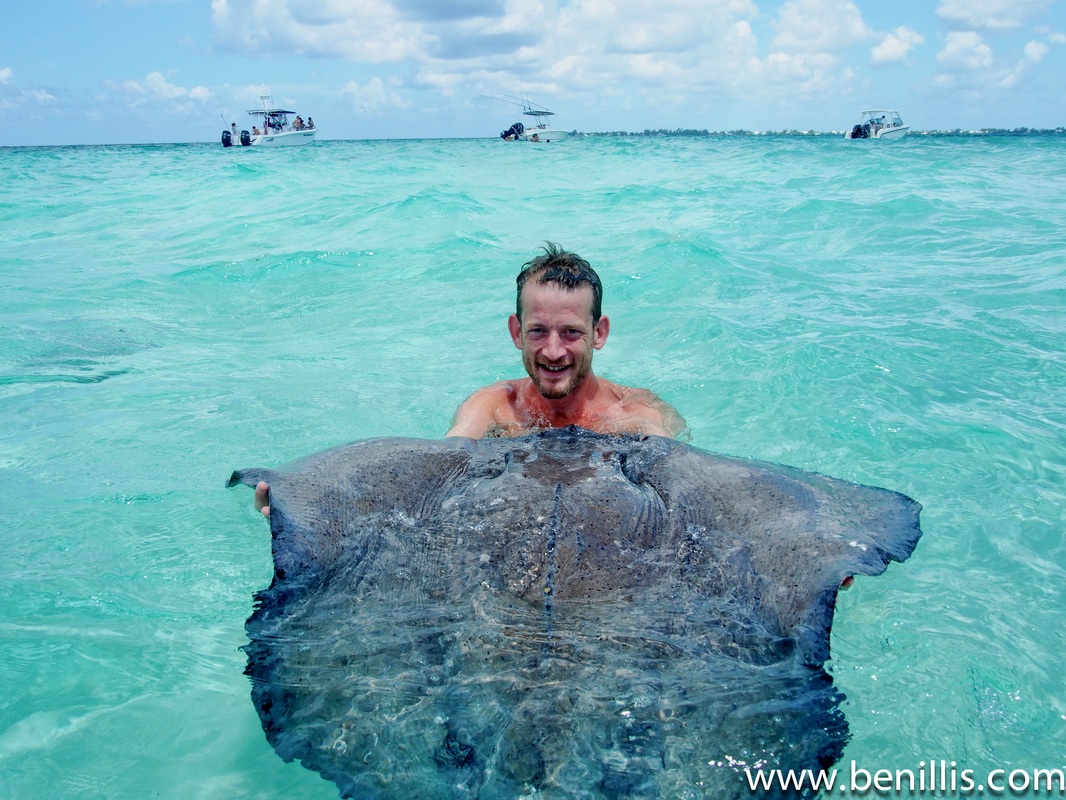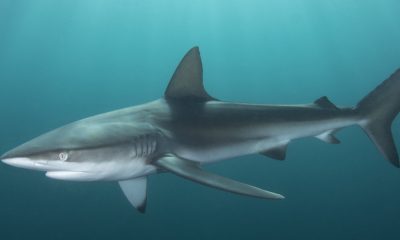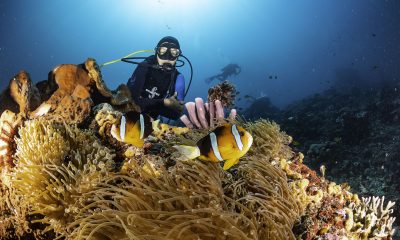News
The Cayman Islands: Above and Below
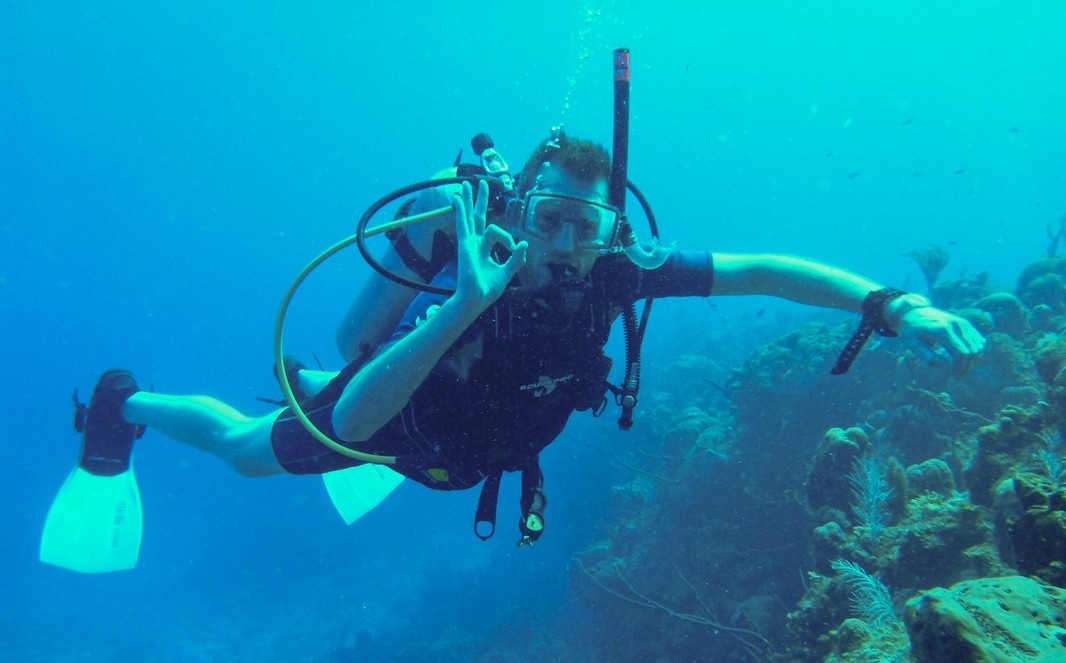
New diver Ben Illis visits the Cayman Islands to complete his open water course and to find out more about what the trio of Caribbean Islands have to offer holidaymakers
Exhaling, I sink gently to the soft, white sand seabed as a Southern Stingray ripples elegantly past. Scores of tiny, pearlescent Yellowhead Jawfish dart backwards into their little burrows, spitting mouthfuls of sand in apparent disgust as they retreat. Ahead of me, myriad reef fish swarm around the coral stack that rises sharply almost to the water’s surface. Our guide beckons us forward and I scan the tower for some sign of the promised swim through, marvelling at the diversity of coral. As I approach, a tunnel opens before me, and, checking the group is with him, our guide sinks into its cavernous maw. The tunnel levels out and, taking care not to damage the fragile orange sea fans all around, we swim towards the dappled light ahead. We emerge onto the wall, a three foot Hawksbill Turtle drifting gently by on slow, powerful strokes of its flippers. It’s awe-inspiring.
Located in the central Caribbean, the Cayman Islands are not, as one might expect, volcanic but rather the highest peaks of the underwater range that borders the 7.5km deep Cayman Trench that divides the North American and Caribbean tectonic plates. The group comprises three islands: Grand Cayman lies 150 miles south of Cuba and 180 miles west of Jamaica. Largest it may be, but at only 22 miles long and 8 at its widest point, it’s far from huge. Tiny Cayman Brac and Little Cayman (The Sister Islands) are close neighbours and lie 90 miles to the north-east. Grand and Little Cayman are just 35 feet above sea level at their highest points, while Brac’s geography is a little different, with dramatic cliffs on the bluff at the east end and a more recognizably Caymanian flat coastal plain to the west.
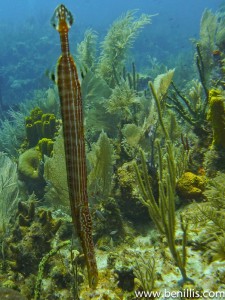
 The porous limestone bedrock of all three islands allows rainwater to filter through and out to sea at some depth, with no obvious water run off to speak of. This means the sea surrounding the islands maintains its crystal-clear aquamarine colour whatever the weather and is one reason for the islands’ reputation as one of the world’s best dive sites. Another is the well policed conservation policy on all reefs around all three islands, as well as, of course, year-round warm water and over 250 separate dive sites, including world-famous wrecks and coral walls. The clarity of water and predictability of conditions also make Cayman an ideal location for novice divers. Learning to dive isn’t what it was: the days of devoting long chunks of your holiday to the classroom are long gone. These days, the theory is done online prior to your trip, with practical skills easily mastered in a couple of sessions at your local pool. I trained with Oyster Diving (www.oysterdiving.com), who provide an excellent and highly professional service at multiple locations across the South of England. Once you’ve mastered the basics, you are referred to any local dive center at the destination of your choice – most Cayman hotels either have on-site dive centres or an arrangement with someone nearby – and, after your four qualifying dives in the open sea (witnessed, if my experience is anything to go by, by a profusion of turtles and groupers and the like), your certification is in your hand.
The porous limestone bedrock of all three islands allows rainwater to filter through and out to sea at some depth, with no obvious water run off to speak of. This means the sea surrounding the islands maintains its crystal-clear aquamarine colour whatever the weather and is one reason for the islands’ reputation as one of the world’s best dive sites. Another is the well policed conservation policy on all reefs around all three islands, as well as, of course, year-round warm water and over 250 separate dive sites, including world-famous wrecks and coral walls. The clarity of water and predictability of conditions also make Cayman an ideal location for novice divers. Learning to dive isn’t what it was: the days of devoting long chunks of your holiday to the classroom are long gone. These days, the theory is done online prior to your trip, with practical skills easily mastered in a couple of sessions at your local pool. I trained with Oyster Diving (www.oysterdiving.com), who provide an excellent and highly professional service at multiple locations across the South of England. Once you’ve mastered the basics, you are referred to any local dive center at the destination of your choice – most Cayman hotels either have on-site dive centres or an arrangement with someone nearby – and, after your four qualifying dives in the open sea (witnessed, if my experience is anything to go by, by a profusion of turtles and groupers and the like), your certification is in your hand.
But what of life above the water line? Cayman’s remote location makes it a great stopping point for many migrant birds (accounting for 80% of records) and is also home to 17 endemic bird sub-species and several notable regional endemics. Birds aside, the islands’ unique flora, butterflies and reptiles alone make it worth a visit. Much of the island’s fauna has evolved relatively unmolested and so even rarities are generally easily spotted. The diversity of flora is also extremely rich, with many plants bearing colorful local names: the red birch is known as the Tourist Tree, because its ‘skin’ turns red and peels. A caper plant producing gory looking bone-white fruit in a blood-red pod is known as Bloody Head Raw Bones.
Grand Cayman, with a permanent population of 50,000, is far and away the most developed island and easily earns its first world Caribbean reputation. George Town and its suburbs spread to the north and west and are filled with high end shopping and dining, much of which centers around the new Camana Bay development. Head to the extremities of the island, however, and its wilder side is quickly revealed. West Bay is dominated by the (actually 5.5 mile long) pristine, white sand Seven Mile Beach. At the north-eastern most end of West Bay is Barker’s National Park, home to a good variety of bird species, as well as a favorite destination for horse-riding, where you can have the unforgettable experience of riding a horse out to sea and swimming on horseback (info@ponies.ky). In West Bay itself, the friendly and relaxed Cobalt Coast Dive Resort has partnered up with Divetech, offering excellent diving at two locations – one eastward facing and one westward, both of which, uniquely among GC’s dive locations, have direct shore access to the outer edge of the reef. The dual locations allow for comfortable shore diving, even when wind is kicking up some swell.
Across to the east is much wilder. A coastal road encircles the landmass, while the interior is dominated by mangrove swamp and low-lying limestone outcrops. Around the swamp lie a series of high salinity ponds, home to an array of bird-life, including large flocks of Tricolored Herons, many unusual migrant shore-birds and the occasional Roseate Spoonbill. Groups of Antillean Nighthawks congregate here in summer too, gorging themselves on crepuscular insects. Also in the east are the Royal Botanical Gardens, home to Cayman’s most emblemic species, the Blue Iguana.
While it is the most well-known, the Blue is not the only endemic blue reptile here, with the delicate forest-dwelling Blue-Throated Anole also widespread. The beautifully planted Gardens contain habitats representative of all three islands and are home also to many of the islands’ endemic bird sub-species, including Loggerhead Kingbird, Caribbean Elaenia and Cuban Bullfinch.
To the west of the Botanical Gardens lies the Mastic Trail. The two-mile Trail, named for the critically endangered Yellow Mastic tree that lies along its path, crosses through 2 million year old woodland and is home to some 180 species of bird, including the endemic Grand Cayman Parrot. Other gems to look out for include the West Indian Woodpecker, Western Spindalis, Northern Flicker and Caribbean Ground Dove. The trail takes around three hours to hike and is easy-going underfoot, taking in a vast array of flora, many of which are endemics, with new species being discovered year after year. The butterfly diversity is also astonishing, with the world’s smallest – the pygmy blue – rediscovered here in 2002 having long been presumed extinct. It’s a treat to encounter such an easily accessible location for so many significant species.
Flying over to the Sister Islands is a dramatic affair, with stunning aerial views of azure seas and coral reef. Cayman Brac is the most ‘Old Caribbean’ of the islands, with a permanent population of 2,500, living largely in traditionally built houses. It’s very quiet and very pretty. The island is dominated by a rocky bluff, which forms a spine through the center of the eastern half of the island, ending in dramatic cliffs where Brown Boobies and Magnificent Frigatebirds nest. A large reserve cuts across the bluff to protect the Cayman Brac Parrot, easily spotted despite there being only an estimated 350 individuals left in the wild. There is an impressive wooden walkway across the reserve, allowing you to view the dense vegetation and rocky limestone beneath, without having to hack your way through it, and from which you can easily see two other delightful endemics: the Vitelline Warbler and the Red-Legged Thrush. Tucked into the side of the bluff are several caves, home to roosts of Jamaican Fruit Bat. The flat, western half of the island is characterized by more brackish pools, which support a large population of regional endemic West-Indian Whistling Ducks, among many other species of water-bird.

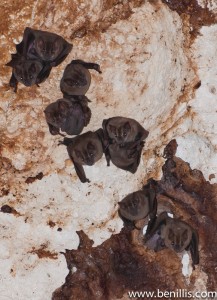 A short-hop across to Little Cayman and there is another significant iguana to track down. The Sister Islands Rock Iguana is still considered the same species as the Cuban, however momentum is gaining to declare this another endemic sub-species. Certainly the Rocks look very different from their more widespread Cuban cousin. Again, high salinity ponds line the island’s coast and one of these – The Booby Pond – is home to the Caribbean’s largest breeding population of Red-Footed Boobies, in both pale and dark morph, as well as more Magnificent Frigatebirds, Yellow-Crowned Night Heron and Double-Crested Cormorant. With a permanent population of just 250, Little Cayman is also one of the most unspoilt islands of the Caribbean. You are often alone on its long, white beaches and it’s a fantastic place to get away. The Pirate’s Point Resort has earned its reputation as a stand-out dive resort with exquisite food and a uniquely eccentric style. No surprise then that the bulk of guests return. Little Cayman diving is also, for my money, the most spectacular of the Caymanian lot, with the justly famous Bloody Bay Wall taking the well-deserved crown.
A short-hop across to Little Cayman and there is another significant iguana to track down. The Sister Islands Rock Iguana is still considered the same species as the Cuban, however momentum is gaining to declare this another endemic sub-species. Certainly the Rocks look very different from their more widespread Cuban cousin. Again, high salinity ponds line the island’s coast and one of these – The Booby Pond – is home to the Caribbean’s largest breeding population of Red-Footed Boobies, in both pale and dark morph, as well as more Magnificent Frigatebirds, Yellow-Crowned Night Heron and Double-Crested Cormorant. With a permanent population of just 250, Little Cayman is also one of the most unspoilt islands of the Caribbean. You are often alone on its long, white beaches and it’s a fantastic place to get away. The Pirate’s Point Resort has earned its reputation as a stand-out dive resort with exquisite food and a uniquely eccentric style. No surprise then that the bulk of guests return. Little Cayman diving is also, for my money, the most spectacular of the Caymanian lot, with the justly famous Bloody Bay Wall taking the well-deserved crown.
There’s a great deal to Cayman that belies its preppy, international banking reputation. The Cayman Islands Tourist Board offers free guided tours on all islands to any visitor and knowledgeable private guides are available to take things further. With well-established volunteer programs helping to protect everything from plants to turtles, via iguanas and butterflies, it’s also a place where it’s easy to get involved yourself and see your tourist dollar make the difference it so easily can.
Swimming with Stingrays
A century or so ago Cayman was plagued with mosquitoes and the island’s fishermen would stop on the sand-bar that encloses the north sound to gut their catch and clean their nets in the waist deep turquoise waters, so as not to be eaten alive back home. Over time, large groups of Southern Stingray would congregate in search of an easy meal and thus was Stingray City born. Stingrays are cartilaginous fish, closely related to sharks. They have a barb on their tail, which contains venom glands which can be released as a defense mechanism, causing a painful – and in the case of a very few species, even lethal – sting. For all their fearsome reputation, they are a docile and inquisitive fish, known for brushing their fins against new objects (and people) and ‘sniffing’ at them with their blunt noses, where their sensory organs are concentrated. Naturally, they feed on molluscs and crustaceans, which they sniff out in the sand and ingest with the powerful suction of their toothless mouths, although they do also take carrion. Five years ago, a spate of ill-informed newspaper articles implied that the rays were in some way coerced into playing and that this encouragement of an unnatural behavior pattern was detrimental to their health. The truth is all Stingray City excursions are licensed; feeding the rays is outlawed and the behavior of tourists and tour operators alike is tightly controlled. Yet still the rays turn out in their droves, apparently for nothing more than to play. Being marauded by a fish like a vast, tailed portobello mushroom is an exhilarating experience and a worthy addition to anyone’s wildlife bucket list. The sand-bar does get busy when the day-boats arrive, so for a more intimate encounter, get out before 11am or later in the afternoon.
Licensed to Cull
Beautiful and deadly, the invasive lionfish, venomous aquatic pet choice of any James Bond villain worth his salt, is both a ruthless predator and highly efficient breeder. Native to the Indo-Pacific, it was once thought that the lionfish was first introduced into Caribbean waters in the wake of Hurricane Andrew in 1992, when a south Florida aquarium was destroyed and six individuals escaped. A more recent report suggests it was around ahead of that, lending credence to the theory that its colonization of the region is thanks to specimens outgrowing private aquaria and being released by thoughtless tank owners. In any case, it is now widespread across the region and, due to a lack of predation by native species; a high tolerance for temperature variance; year-round breeding and the fact it reaches sexual maturity relatively young, it’s proving a significant problem. While native fish leave it unmolested, the lionfish gorges itself on their sexually immature young, meaning a deficit of sexually mature individuals and a bleak outlook for the natives. The Little Cayman-based Central Caribbean Marine Institute is one of many organizations across the region that are behind a dedicated regional culling program, which has been shown to have a great beneficial effect. Put simply: culling works. Divers and fishermen are given a brief lecture on the history of the invasion and the fish’s habits, as well as important advice on how to manage its extremely painful sting (plunge the affected region into water as hot as you can bear, as heat destroys the proteins that make up the venom). Once licensed, cullers are free to spear and remove fish even from protected areas. The second prong to this successful attack is to raise the fish’s profile on restaurant menus across the region. The lionfish is great eating and makes for an excellent alternative to often over-fished native species, such as snapper and grouper. So, if you don’t want blood on your hands or, as was the case for me, you fail to find any once you get licensed, be sure and order the lionfish ceviche when you get home.
Cayman Islands – What you need to know
Cost rating:
2,100 for ten days, excluding some meals and drinks
Sample package tour:
- Oyster Diving offer a ten day package to all three islands, including return economy flights from London to Grand Cayman. Package includes:
- 5 nights self-catering at Compass Point (apartments), Grand Cayman including 4 days diving and car rental
- 3 nights at Pirates Point Resort, Little Cayman including 3 meals per day, some drinks, 2 days diving and a deluxe room
- 2 nights at Brac Reef Resort, Cayman Brac including 1 day diving and all meals
- Internal flights from Grand Cayman > Little Cayman > Cayman Brac > Grand Cayman. Transfers to/from hotels.
The cost based on 2 people sharing is from £2,100 per person (£350 discount for non-divers). Oyster Diving also offer a free Scuba Review (refresher course) or trial dive for non-divers on all bookings.
How to get there:
BA flies directly to Grand Cayman via Nassau 4 times a week. Cayman Airways operates several daily flights between Grand Cayman and the The Sister Islands.
Visa requirements from UK:
None.
Best time to go:
November to April. The British summer months are hotter and more humid, with occasional rain showers, which generally pass quickly. Although not on the main hurricane route, Cayman is rarely caught out.
Tips and Warnings:
Grand Cayman is very developed and has excellent pharmacies and other services. The Sister Islands are more basic though, so be prepared with any medical needs ahead of visiting. Good hiking shoes are essential, as is sun-screen, a good mosquito repellent and a hat. Divers should check in with their dive centre and bring necessary certification. Where they occur, hiking trails, such as the Mastic Trail, are clearly marked and well-cleared of any dangers. Avoid hiking off these trails as Cayman is home to several formidable species of plant, including the Maiden Plum and the Manchineel tree, both of whose sap causes painful blistering and, in the latter case, occasionally even blindness. All Caymanian guides are extremely well-versed in these plants and will delight you with horror stories as they teach you what to avoid. For more information visit www.caymanislands.co.uk. For expert advice or to book guides, the Cayman Islands Department of Tourism mans a UK helpline on +44 207 491 7771 or can be emailed on concierge@caymanislands.co.uk.
Huge thanks to www.caymanislands.ky – www.oysterdiving.com – www.cobaltcoast.com – www.divetech.com – www.ponies.ky – www.bracreef.com – www.piratespointresort.com – www.compasspoint.ky – www.redsailcayman.com
For more from Ben, visit www.benillis.com.
Blogs
Northern Red Sea Reefs and Wrecks Trip Report, Part 3: The Mighty Thistlegorm

Jake Davies boards Ghazala Explorer for an unforgettable Red Sea diving experience…
Overnight, the wind picked up, making the planned morning dive a bit bumpy on the Zodiacs to the drop point on Thomas Reef. There, we would dive along the reef before descending through the canyon and then passing under the arch before ascending the wall with a gentle drift. The site provided great encounters with more pelagic species, including shoals of large barracuda, tuna, and bigeye trevally.
Once back on the boat, it was time to get everything tied down again as we would head back south. This time, with the wind behind us, heading to Ras Mohammed to dive Jackfish Alley for another great gentle drift wall dive before then heading up the coast towards the Gulf of Suez to moor up at the wreck of the Thistlegorm. This being the highlight wreck dive of the trip and for many onboard, including myself, it was the first time diving this iconic wreck. I had heard so much about the wreck from friends, and globally, this is a must on any diver’s list. Fortunately for us, there was only one other boat at the site, which was a rarity. A great briefing was delivered by Ahmed, who provided a detailed background about the wreck’s history along with all the required safety information as the currents and visibility at the site can be variable.
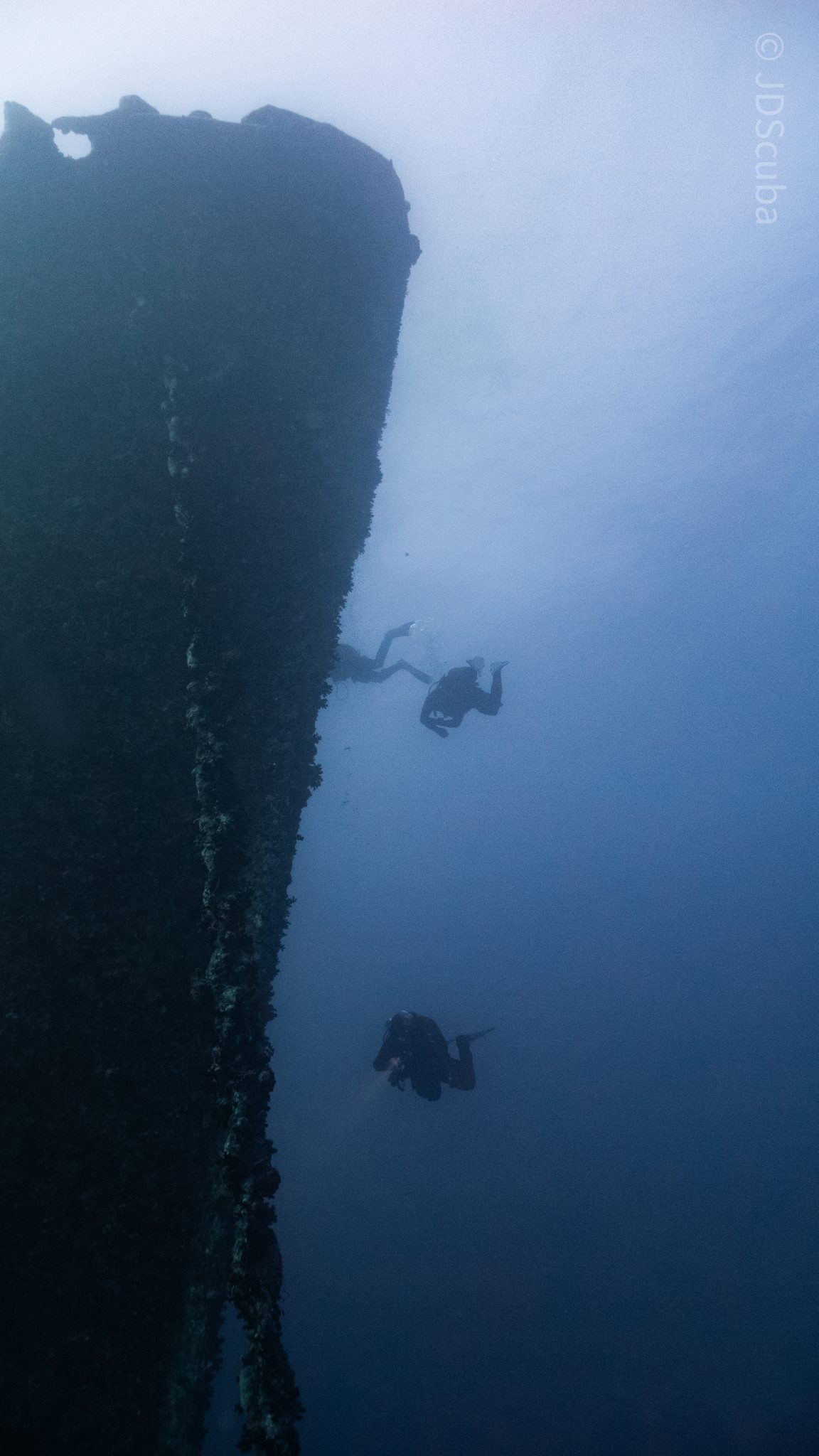
Kitting up, there was a lot of excitement on deck before entering the water and heading down the shoreline. Descending to the wreck, there was a light northerly current which reduced the visibility, making it feel more like the conditions that can be found off the Welsh coast. At 10m from the bottom, the outline of the wreck appeared as we reached the area of the wreck which had been bombed, as our mooring line was attached to part of the propeller shaft. Arriving on deck, instantly everywhere you looked there were many of the supplies which the ship was carrying, including Bren Carrier tanks and projectiles that instantly stood out.
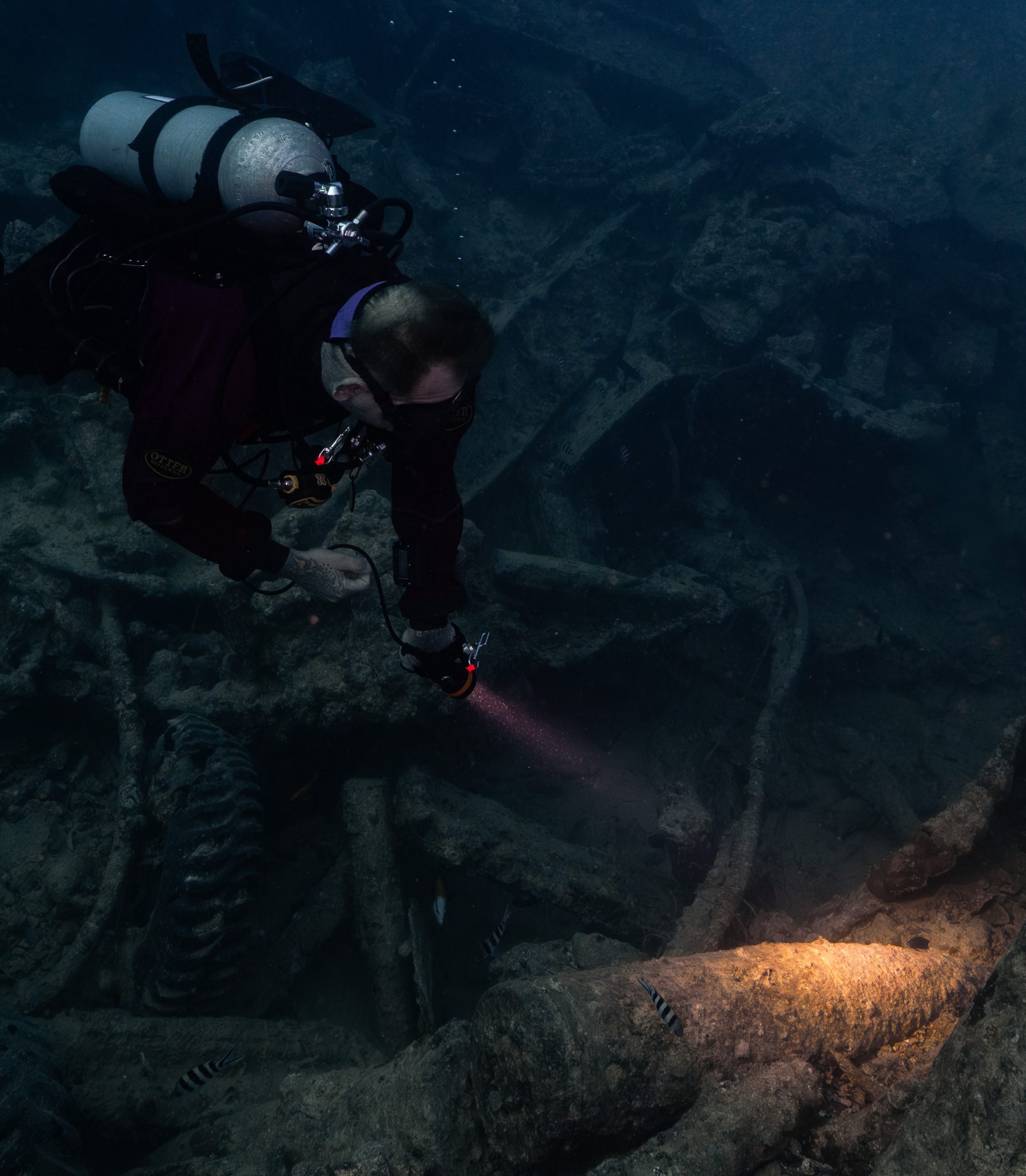
We headed around the exterior, taking a look at the large propeller and guns mounted on deck before entering the wreck on the port side to take a look in the holds. It was incredible to see all the trucks, Norton 16H, and BSA motorcycles still perfectly stacked within, providing a real snapshot in time.
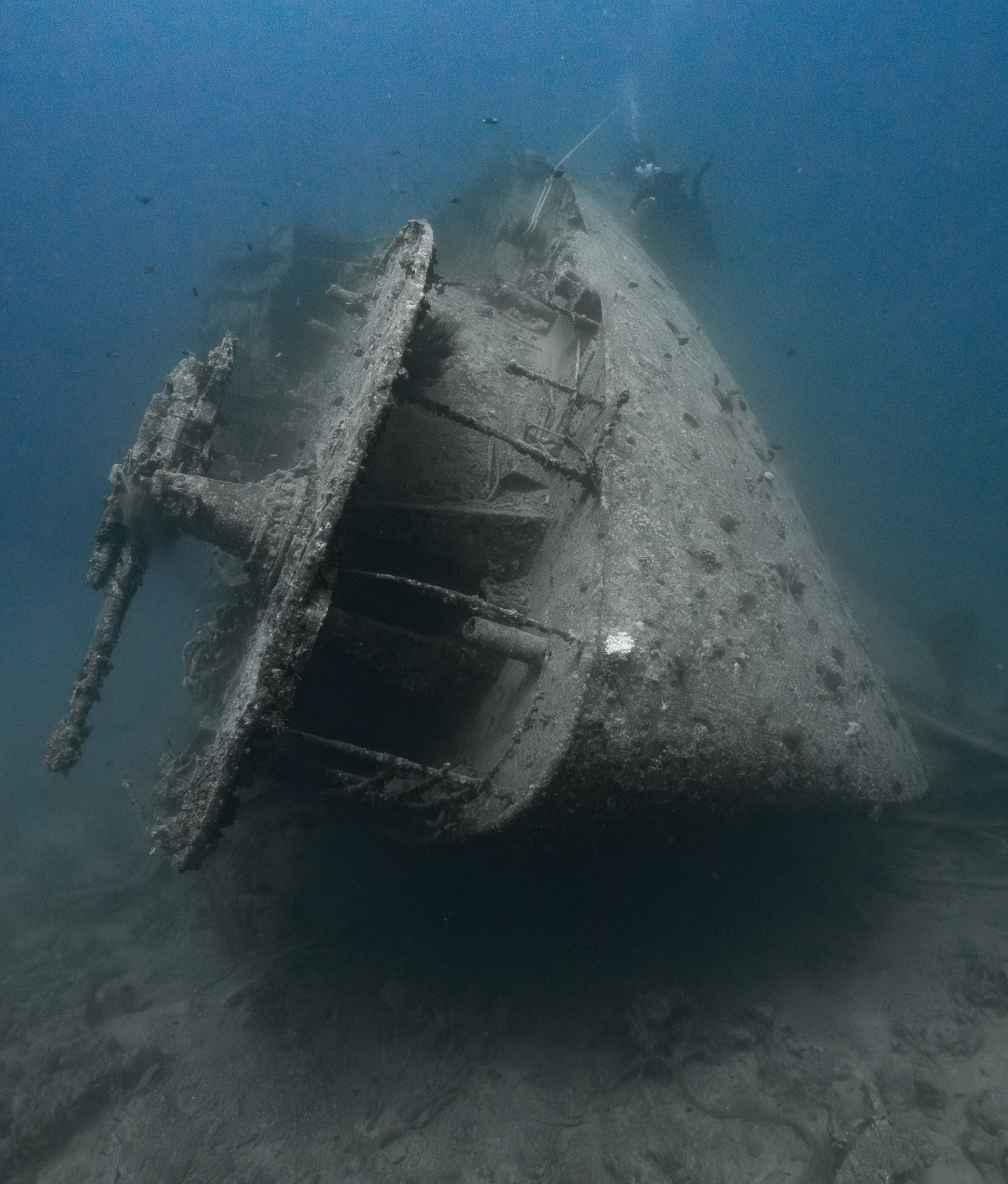
Overall, we had four dives on the Thistlegorm, where for all of the dives we were the only group in the water, and at times, there were just three of us on the whole wreck, which made it even more special, especially knowing that most days the wreck has hundreds of divers. Along with the history of the wreck, there was plenty of marine life on the wreck and around, from big green turtles to batfish, along with shoals of mackerel being hunted by trevally. Some unforgettable dives.

The final leg of the trip saw us cross back over the Suez Canal to the Gobal Islands where we planned to stay the night and do three dives at the Dolphin House for the potential of sharing the dive with dolphins. The site, which included a channel that was teeming with reef fish, especially large numbers of goatfish that swam in large shoals along the edge of the reef. These were nice relaxing dives to end the week. Unfortunately, the dolphins didn’t show up, which was okay as like all marine life they are difficult to predict and you can’t guarantee what’s going to be seen. With the last dive complete, we headed back to port for the final night where it was time to clean all the kit and pack before the departure flight the next day.

The whole week from start to finish on Ghazala Explorer was amazing; the boat had all the facilities you need for a comfortable week aboard. The crew were always there to help throughout the day and the chefs providing top quality food which was required after every dive. The itinerary providing some of the best diving with a nice mixture of wreck and reef dives. I would recommend the trip to anyone, whether it’s your first Red Sea liveaboard in the Red Sea or you’re revisiting. Hopefully, it’s not too long before I head back to explore more of the Red Sea onboard Ghazala Explorer.
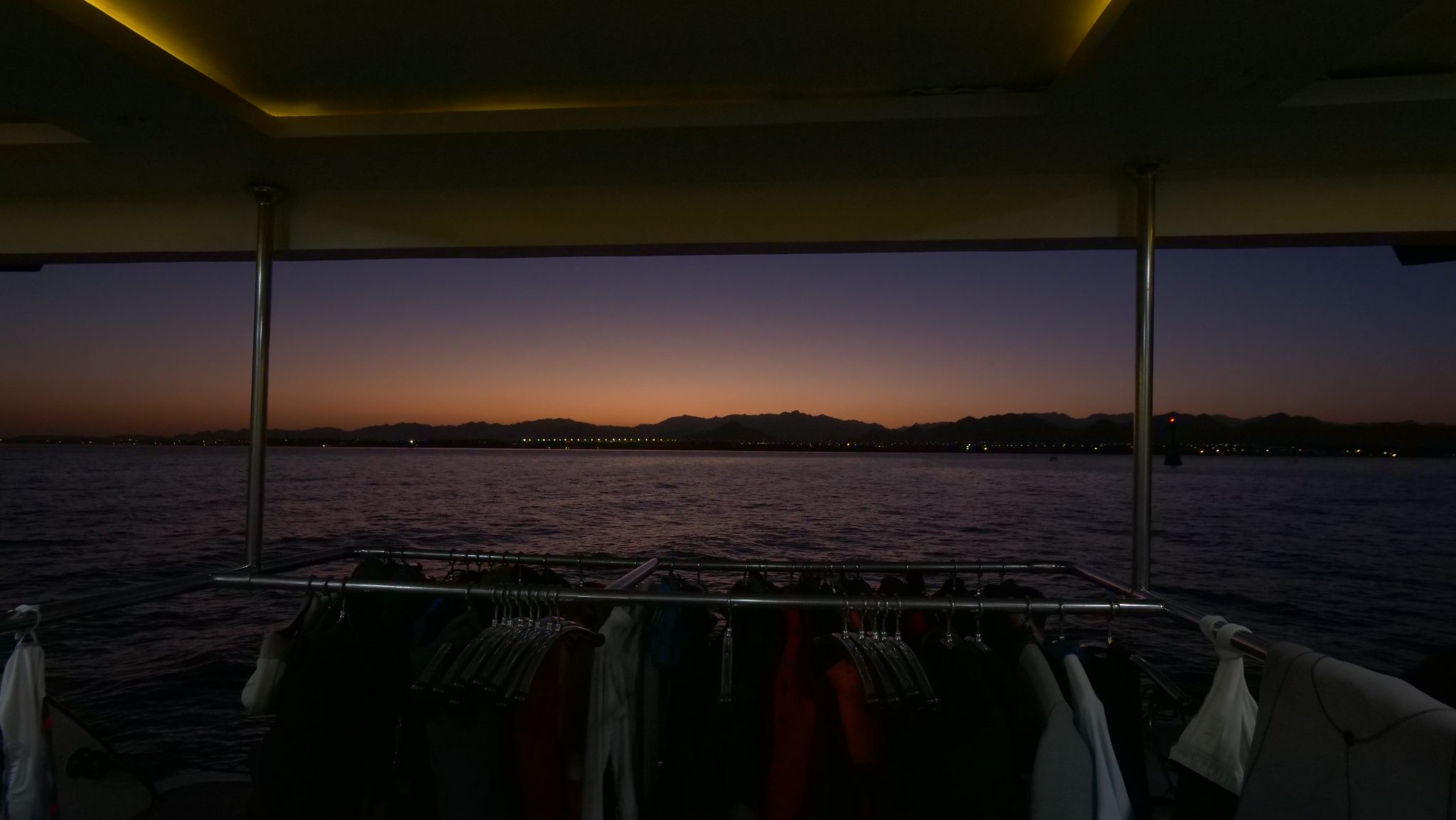
To find out more about the Northern Red Sea reef and wrecks itineraries aboard Ghazala Explorer, or to book, contact Scuba Travel now:
Email: dive@scubatravel.com
Tel: +44 (0)1483 411590
Photos: Jake Davies / Avalon.Red
Blogs
Northern Red Sea Reefs and Wrecks Trip Report, Part 2: Wall to Wall Wrecks
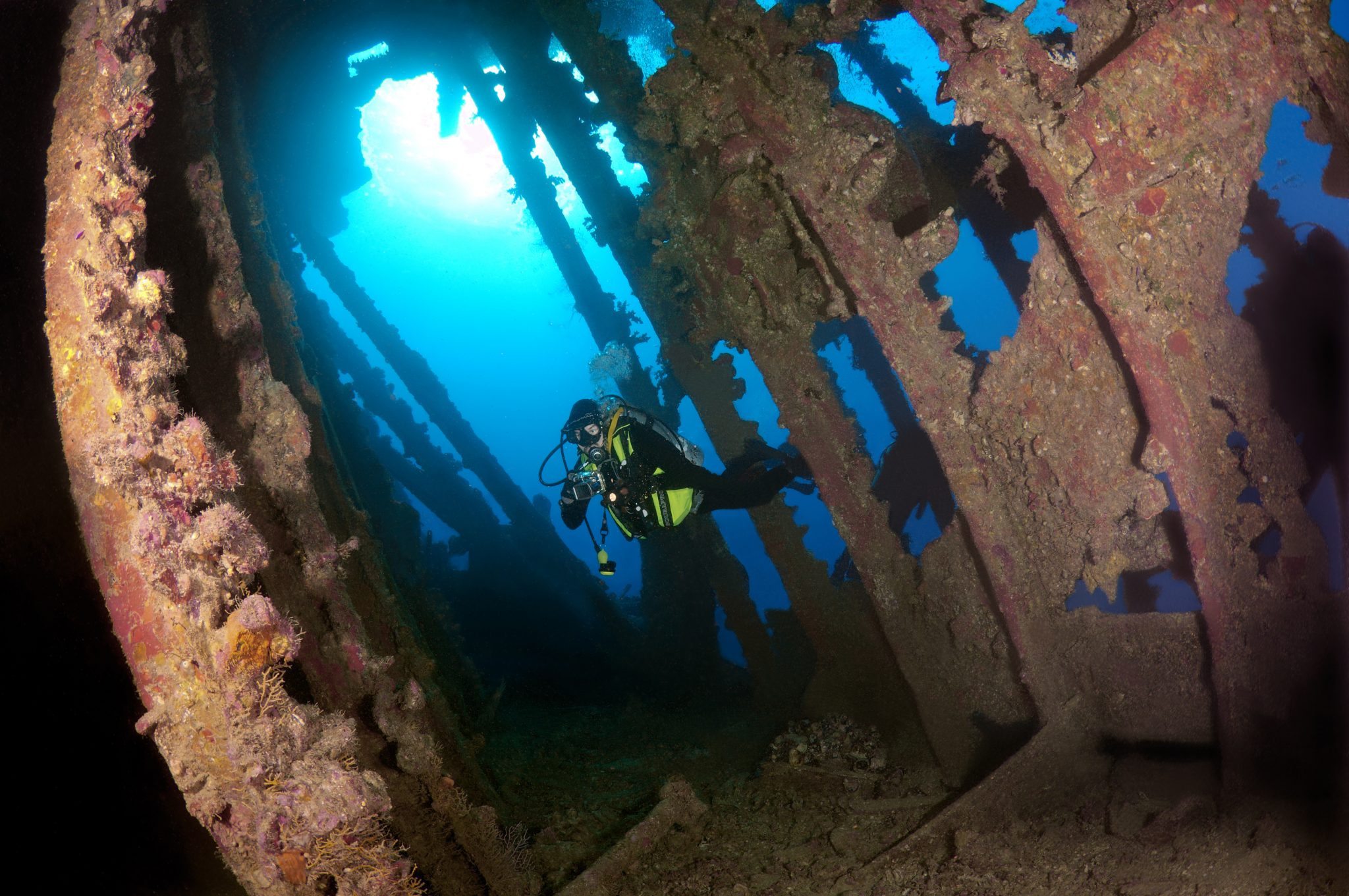
Jake Davies boards Ghazala Explorer for an unforgettable Red Sea diving experience…
The second day’s diving was a day full of wreck diving at Abu Nuhas, which included the Chrisoula K, Carnatic, and Ghiannis D. The first dive of the day was onto the Chrisoula K, also known as the wreck of tiles. The 98m vessel remains largely intact where she was loaded with tiles which can be seen throughout the hold. The stern sits at 26m and the bow just below the surface. One of the highlights of the wreck is heading inside and seeing the workroom where the machinery used for cutting the tiles are perfectly intact. The bow provided some relaxing scenery as the bright sunlight highlighted the colours of the soft coral reef and the many reef fish.
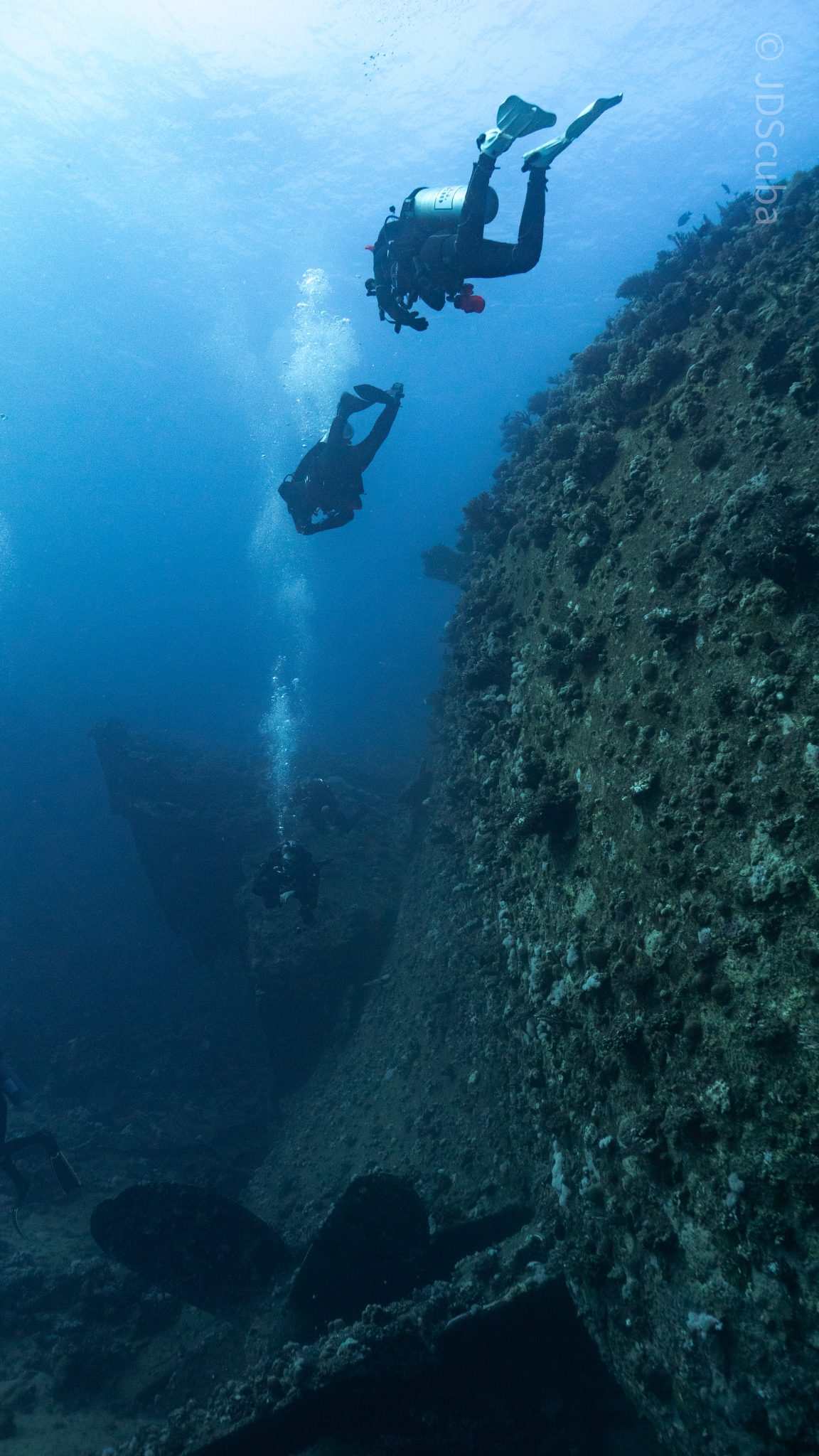
Following breakfast, we then headed to the next wreck, which was the Carnatic. The Carnatic is an 89.9m sail steamer vessel that was built in Britain back in 1862. She ran aground on the reef back in 1869 and remains at 27m. At the time, she was carrying a range of items, including 40,000 sterling in gold. An impressive wreck where much of the superstructure remains, and the two large masts lay on the seafloor. The wooden ribs of the hull provide structures for lots of soft corals, and into the stern section, the light beams through, bouncing off the large shoals of glass fish that can be found using the structure as shelter from the larger predators that are found outside of the wreck.
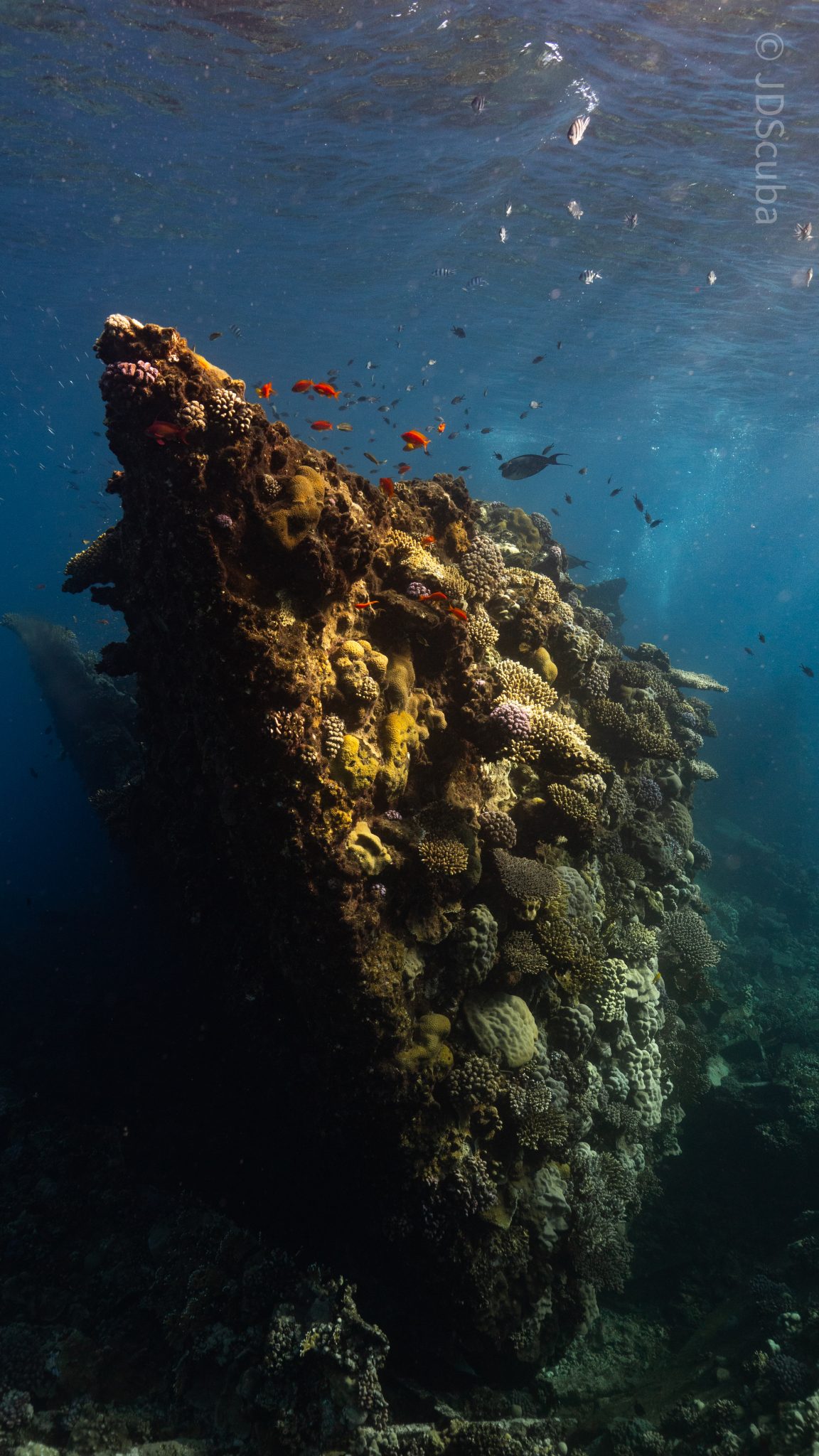
The final wreck at Abu Nuhas was the Ghiannis D, originally called ‘Shoyo Maru,’ which was 99.5m long and built in Japan back in 1969 before becoming a Greek-registered cargo ship in 1980. The ship then ran aground on the reef on April 19th, 1983, and now sits at the bottom at a depth of 27m. Heading down the line, the stern of the ship remains in good condition compared to the rest of the hull. The highlight of the wreck, though, is heading into the stern section and down the flights of stairs to enter the engine room, which remains in good condition and is definitely worth exploring. After exploring the interior section of the ship, we then headed over to see the rest of the superstructure, where it’s particularly interesting to see the large table corals that have grown at the bow relatively quickly considering the date the ship sank. After surfacing and enjoying some afternoon snacks, we made sure everything was strapped down and secured as we would be heading north and crossing the Gulf of Suez, where the winds were still creating plenty of chop.

The next morning, it was a short hop to Ras Mohammed Nature Reserve for the next couple of days of diving. The 6am wake-up call came along with the briefing for the first site we would be diving, which was Shark & Yolanda. The low current conditions allowed us to start the dive at Anemone City, where we would drift along the steep, coral-filled wall. These dives involved drifts, as mooring in Ras Mohammed wasn’t allowed to protect the reefs. As a dive site, Shark & Yolanda is well-known and historically had a lot of sharks, but unfortunately not so many in recent years, especially not so early in the season. However, there was always a chance when looking out into the blue.
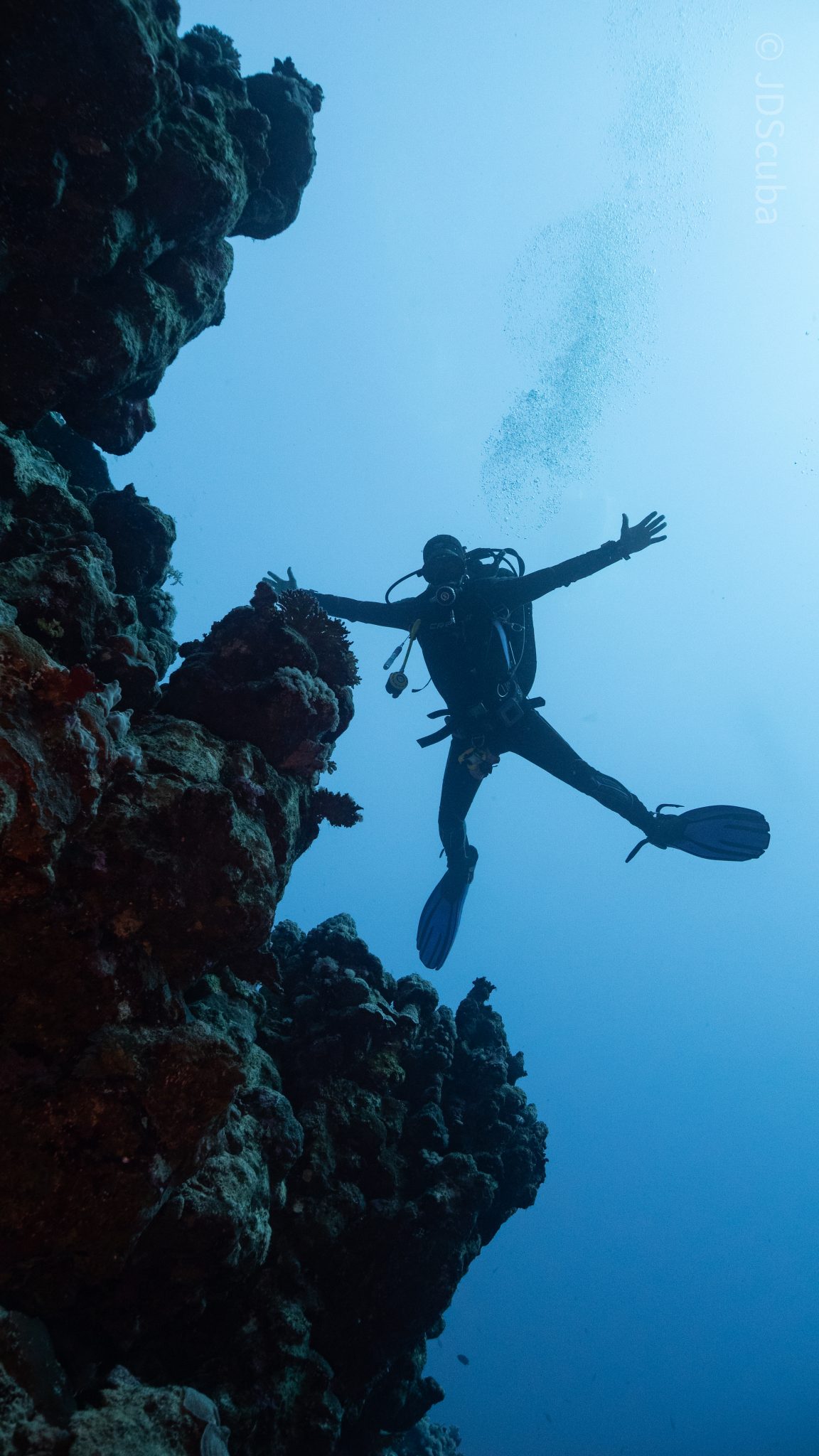
The gentle drift took us along the steep walls of the site, with plenty of anemone fish to be seen and a huge variety of corals. It wasn’t long into the dive before we were accompanied by a hawksbill turtle, who drifted with us between the two atolls before parting ways. Between the two reefs, the shallow patch with parts of coral heads surrounded by sand provided the chance to see a few blue-spotted stingrays that were mainly resting underneath the corals and are always a pleasure to see. With this being the morning dive, the early sunlight lit up the walls, providing tranquil moments. Looking out into the blue, there was very little to be seen, but a small shoal of batfish shimmering underneath the sunlight was a moment to capture as we watched them swim by as they watched us.

Towards the end of the dive, we stopped at the wreck of the Jolanda where the seafloor was scattered with toilets from the containers it was carrying. This provided a unique site to make a safety stop, which was also accompanied by a large barracuda slowly swimming by, along with a hawksbill turtle calmly swimming over the reef as the sun rays danced in the distance.
For the next dive, we headed north to the Strait of Tiran to explore the reefs situated between Tiran Island and Sharm El Sheik, which were named after the British divers who had found them. We started on Jackson before heading to Gordons Reef, where we also did the night dive. All the atolls at these sites provided stunning, bustling coral reefs close to the surface and steep walls to swim along, which always provided the opportunity to keep an eye out for some of the larger species that can be seen in the blue. Midwater around Jackson Reef was filled with red-toothed triggerfish and shoals of banner fish, which at times were so dense that you couldn’t see into the blue. Moments went by peacefully as we enjoyed the slow drift above the reef, watching these shoals swim around under the mid-afternoon sun.
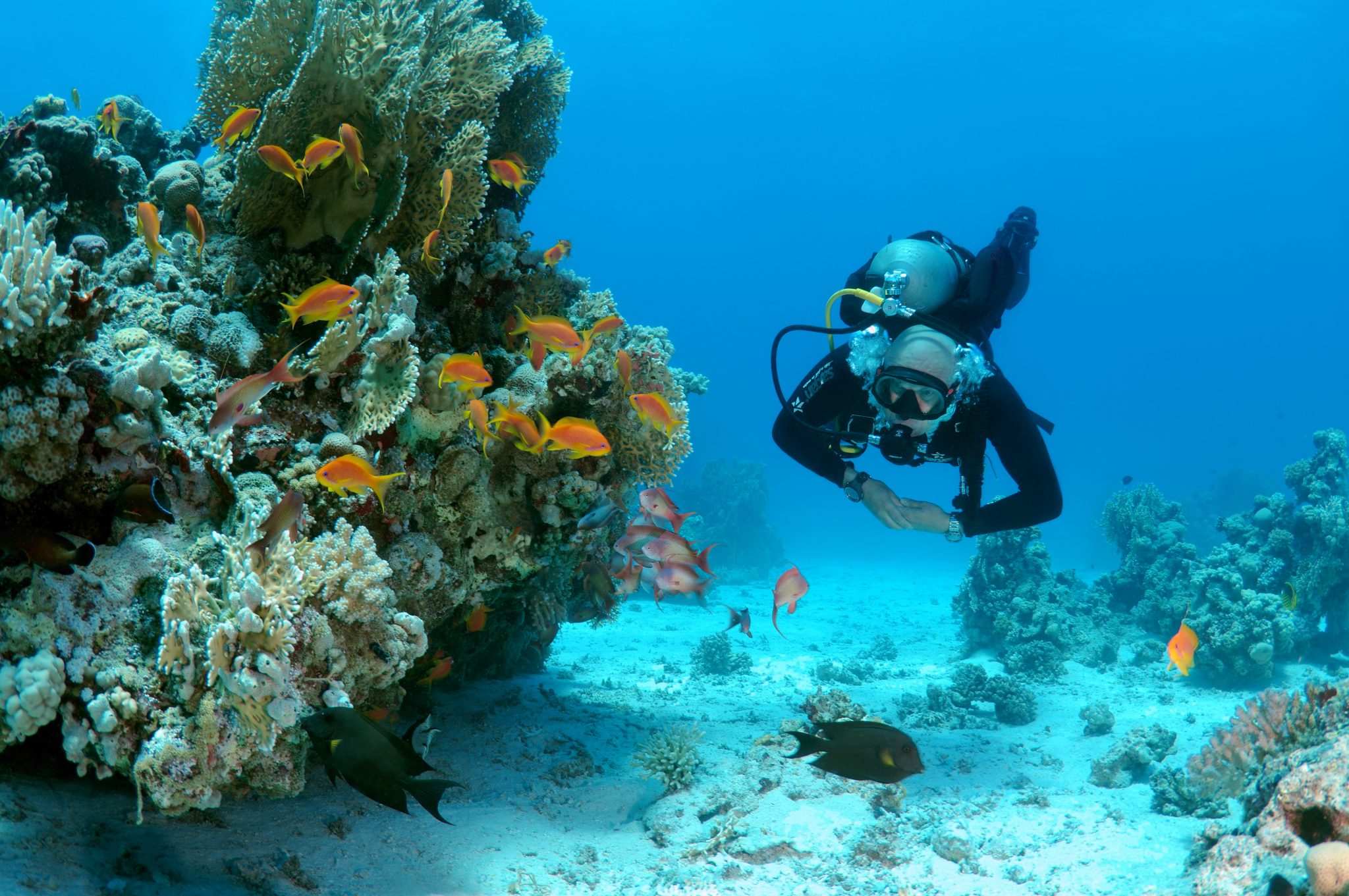
The night dive at Gordon’s Reef was mainly among the stacks of corals surrounded by sand, which was great to explore under the darkness. After some time circling the corals, we came across what we were really hoping to find, and that was an octopus hunting on the reef. We spent the majority of the dive just watching it crawl among the reef, blending into its changing surroundings through changes in colour and skin texture. It’s always so fascinating and captivating to watch these incredibly intelligent animals, in awe of their ability to carry out these physical changes to perfectly blend into the reef. Before we knew it, it was time to head back to the boat to enjoy a well-deserved tasty dinner prepared by the talented chefs onboard.
Check in for the 3rd and final part of this series from Jake tomorrow!
To find out more about the Northern Red Sea reef and wrecks itineraries aboard Ghazala Explorer, or to book, contact Scuba Travel now:
Email: dive@scubatravel.com
Tel: +44 (0)1483 411590
Photos: Jake Davies / Avalon.Red
-

 News3 months ago
News3 months agoHone your underwater photography skills with Alphamarine Photography at Red Sea Diving Safari in March
-

 News3 months ago
News3 months agoCapturing Critters in Lembeh Underwater Photography Workshop 2024: Event Roundup
-

 Marine Life & Conservation Blogs2 months ago
Marine Life & Conservation Blogs2 months agoCreature Feature: Swell Sharks
-

 Blogs2 months ago
Blogs2 months agoMurex Resorts: Passport to Paradise!
-

 Blogs2 months ago
Blogs2 months agoDiver Discovering Whale Skeletons Beneath Ice Judged World’s Best Underwater Photograph
-

 Gear Reviews3 months ago
Gear Reviews3 months agoGear Review: Oceanic+ Dive Housing for iPhone
-

 Marine Life & Conservation2 months ago
Marine Life & Conservation2 months agoSave the Manatee Club launches brand new webcams at Silver Springs State Park, Florida
-

 News3 months ago
News3 months agoWorld’s Best Underwater Photographers Unveil Breathtaking Images at World Shootout 2023


